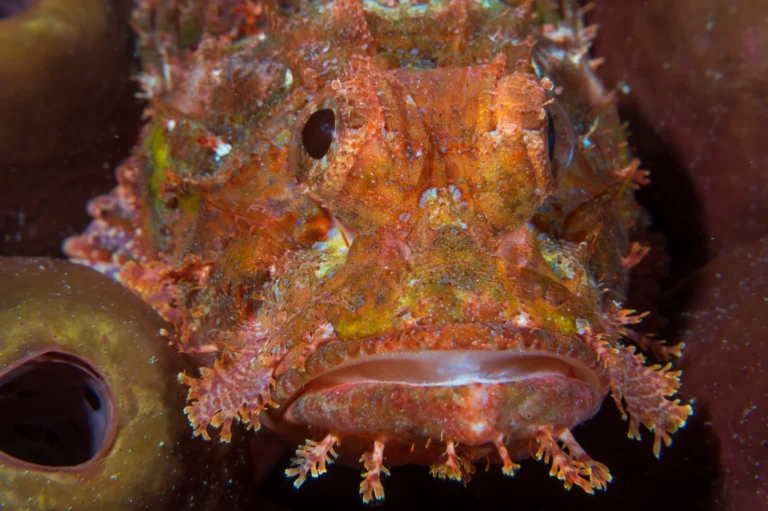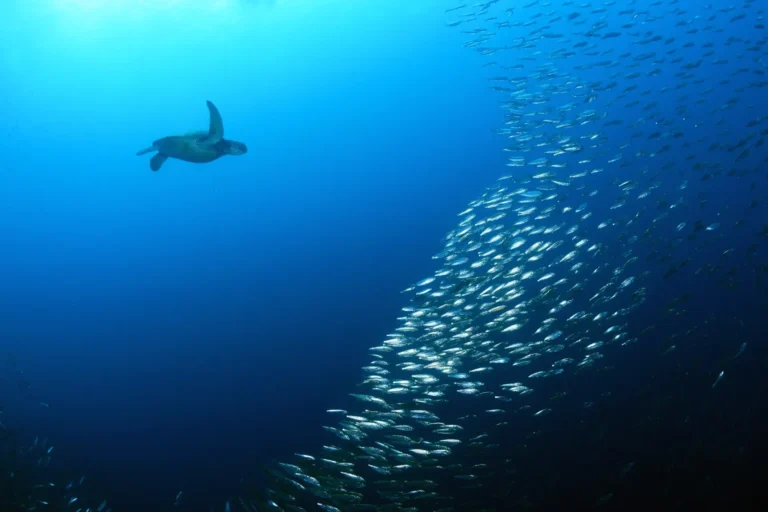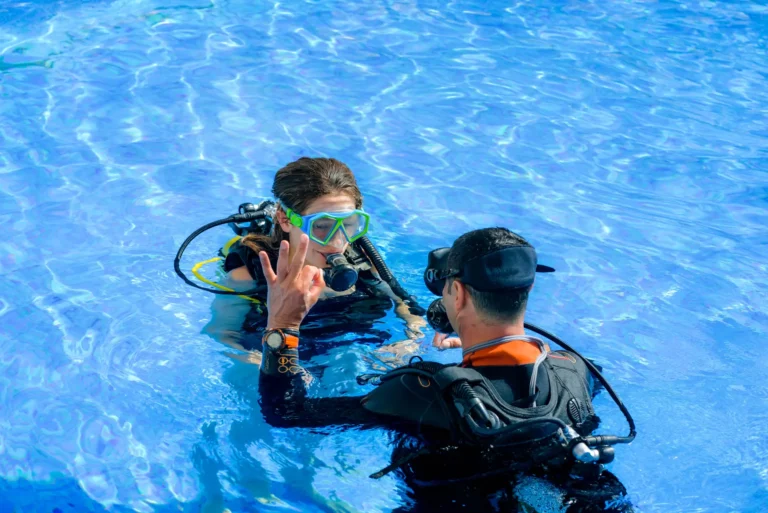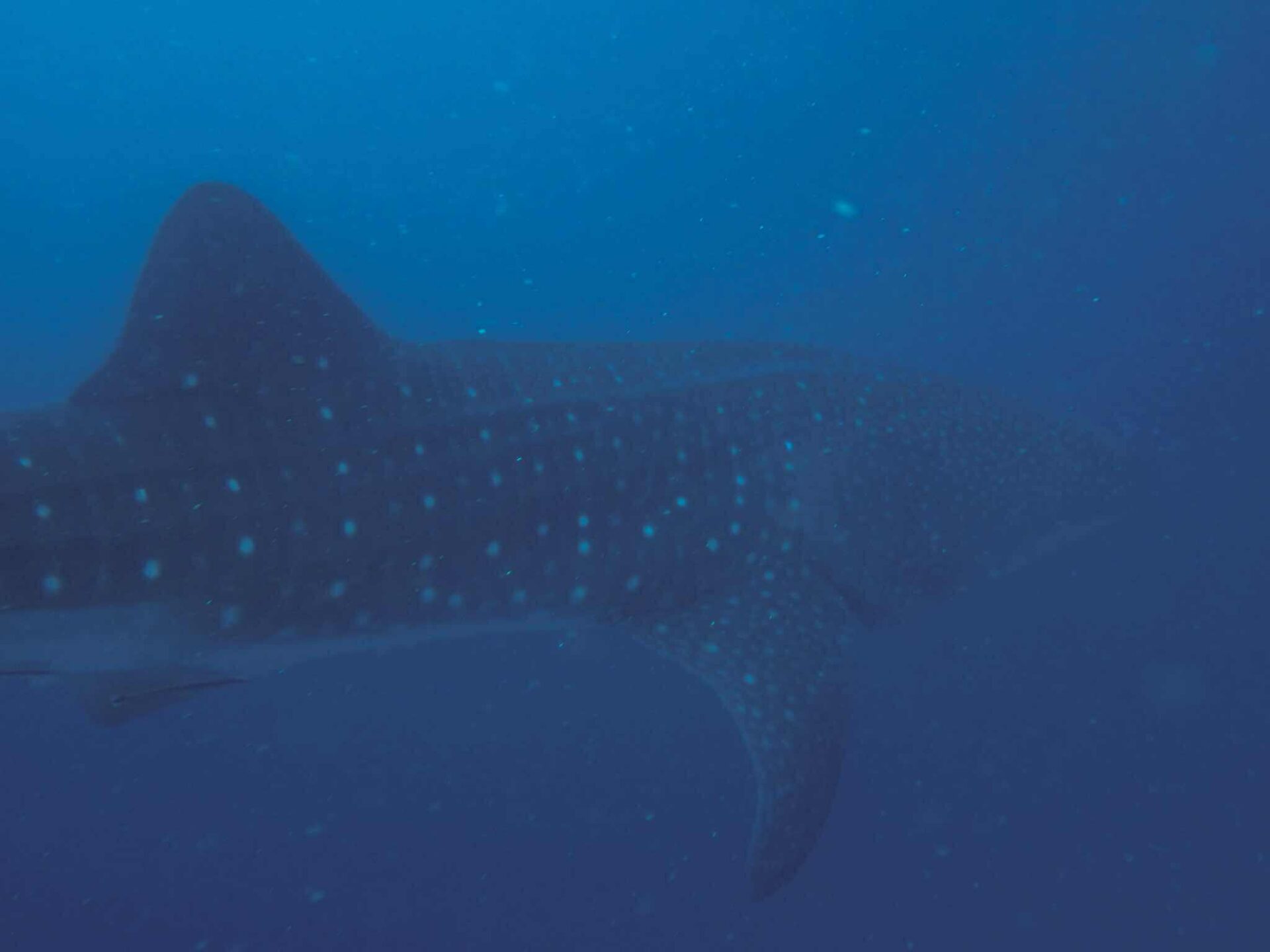The Spiny Stars of the Reef: Scorpionfish and Lionfish in Bohol
Not all reef residents are flashy or fast-moving. Some prefer to lurk in plain sight, perfectly still, armed with venomous spines and incredible camouflage. In Bohol’s vibrant underwater world, two such predators silently rule the reef: the scorpionfish and the lionfish. These masters of disguise are both feared and admired—for their stealth, their strange beauty, and their unique place in the marine food chain.
Divers exploring Bohol’s reefs are often treated to close encounters with these spiny stars, especially around Balicasag Island, Doljo Point, and Kalipayan Reef. But unless you know what to look for, you may swim right past one. In this article, we take a closer look at these fascinating fish, where to find them in Bohol, how to observe them safely, and why they’re such an important part of the reef ecosystem.
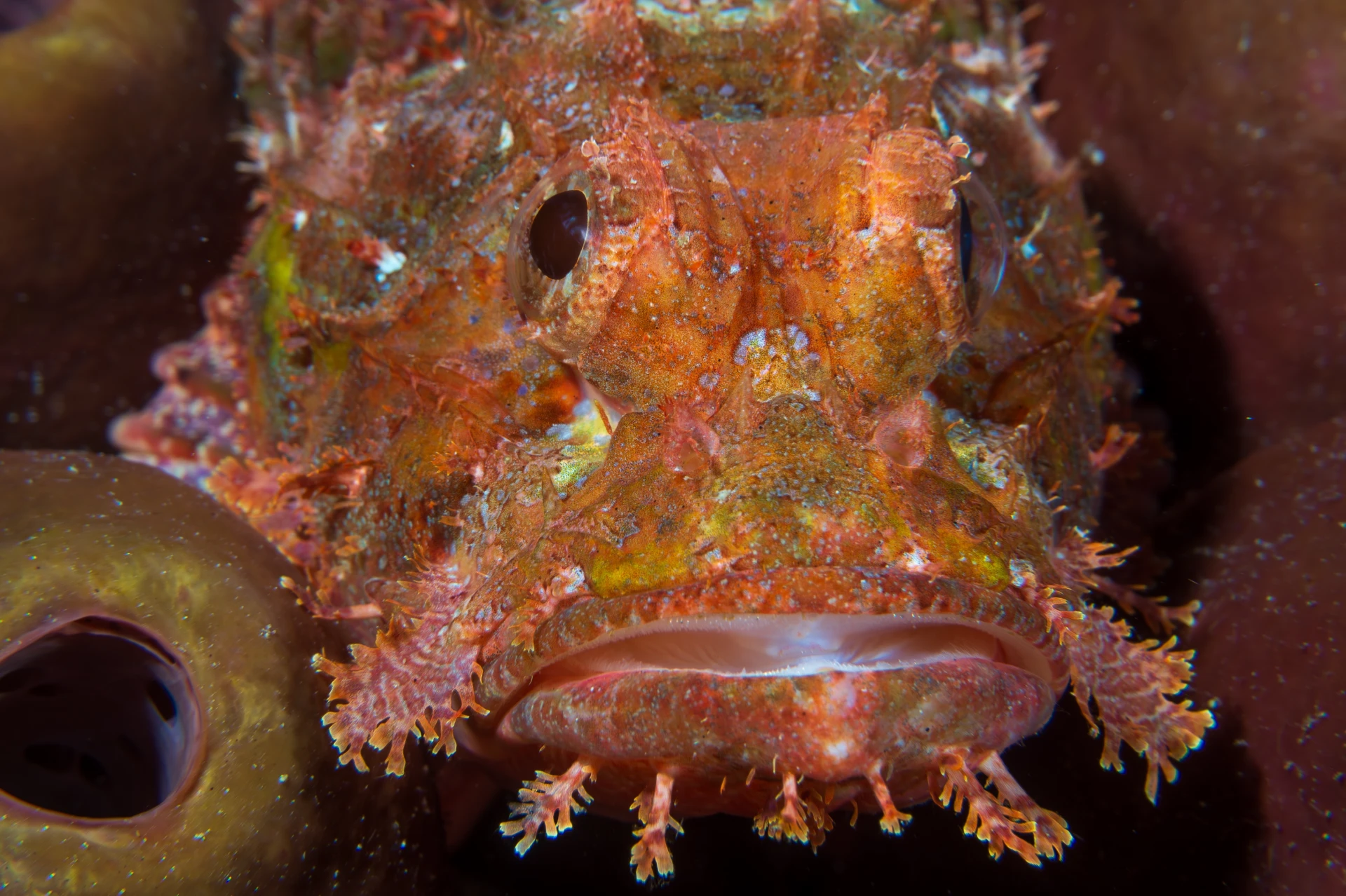
What Are Scorpionfish?
Scorpionfish belong to the same family as lionfish and stonefish (Scorpaenidae). These bottom-dwelling predators are known for:
- Incredible camouflage—they resemble algae-covered rocks or pieces of coral
- Venomous dorsal spines—a defense mechanism rather than an attack tool
- Ambush hunting—they lie still until prey swims close, then strike with lightning speed
They aren’t aggressive, but contact with a scorpionfish’s spines can result in a painful sting. Luckily, observing them at a safe distance is easy—and rewarding—if you know where to look.
Common Scorpionfish in Bohol
Bohol is home to several species, but the most commonly spotted include:
1. Tassled Scorpionfish (Scorpaenopsis oxycephala)
This large species often lies motionless on rocky patches or coral rubble. Its rough, mottled skin is nearly indistinguishable from the substrate, making it an expert ambush predator.
2. Bearded Scorpionfish (Scorpaenopsis barbata)
Often found resting on coral heads or sponges, this species has fleshy appendages around its mouth that help it blend into reef textures.
3. Leaf Scorpionfish (Taenianotus triacanthus)
Unlike other scorpionfish, the leaf scorpionfish is thin and flat, and it sways gently with the current like a piece of debris. Divers often spot it perched vertically on coral branches or rubble.
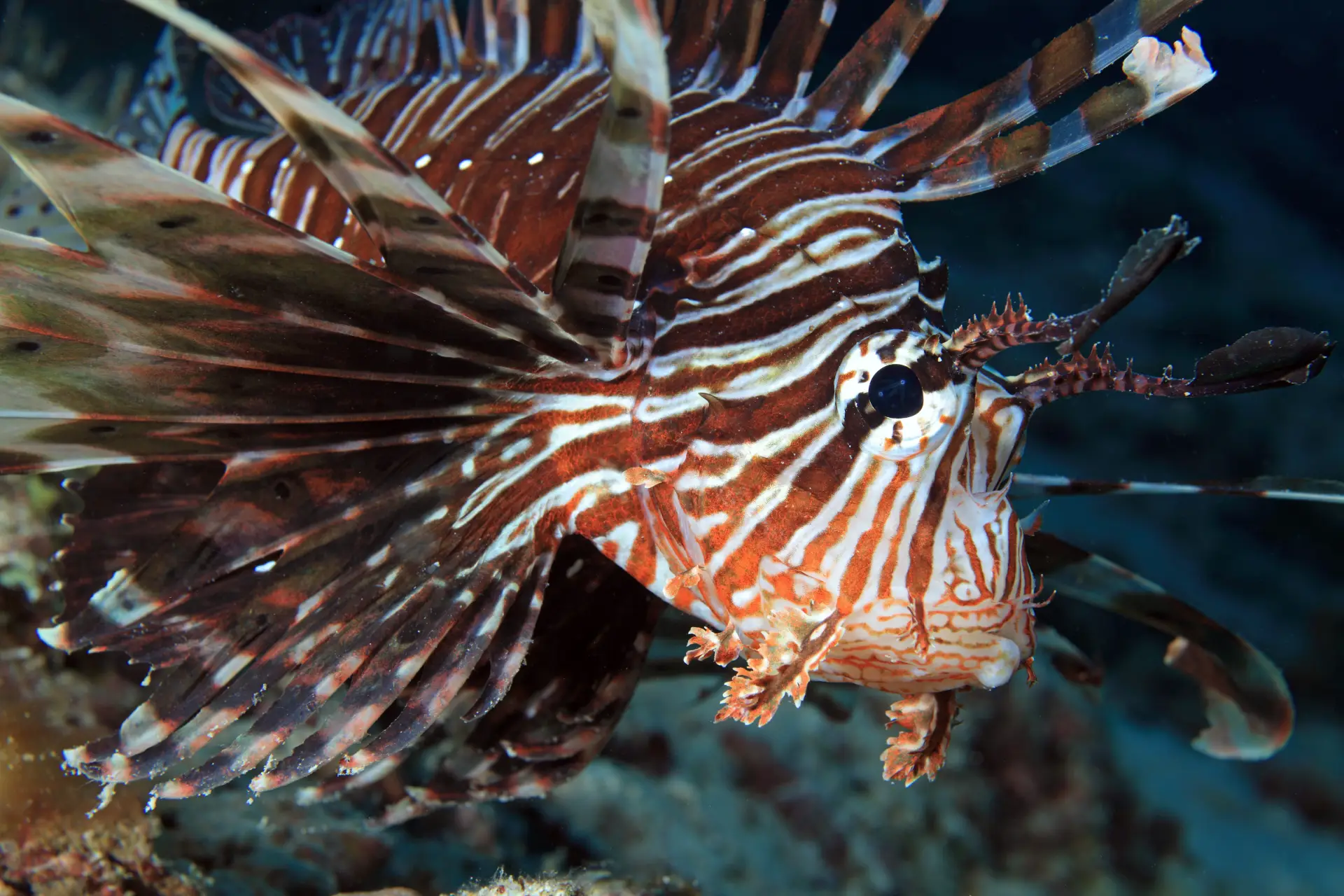
What Are Lionfish?
Lionfish are close cousins of scorpionfish, but their appearance couldn’t be more different. Where scorpionfish hide, lionfish flaunt themselves. With long, flowing fin rays, bold striping, and an elegant swimming style, they’re easy to spot and fascinating to watch.
Lionfish in the Indo-Pacific (including Bohol) are native species, unlike their invasive counterparts in the Atlantic. That means they’re a natural part of the ecosystem and don’t pose a threat to local biodiversity.
Lionfish Species in Bohol
1. Common Lionfish (Pterois volitans)
Seen frequently on night dives or tucked under ledges during the day, these lionfish flare their spines when threatened and use their pectoral fins to herd prey.
2. Dwarf Lionfish (Dendrochirus zebra)
Smaller and more cryptic, these are often found near rubble patches and algae-covered rocks. Their red-and-white stripes make them easier to photograph for macro enthusiasts.
Where to See Scorpionfish and Lionfish in Bohol
Bohol’s diverse reef environments offer multiple habitats for these venomous reef predators. If you’re interested in finding them, head to:
- Balicasag Island – The sloping reef and wall sections harbor tassled and leaf scorpionfish, especially in coral rubble.
- Doljo Point – A favorite for macro life, this site is great for spotting small lionfish and cryptic scorpionfish.
- Kalipayan and Arco Point – With patches of sponge and coral mixed with sand, these are ideal hunting grounds for leaf scorpionfish.
- Night dives anywhere near Panglao often produce lionfish sightings, as they come out to hunt under cover of darkness.
Pro tip: Bring a dive light and a macro lens—you’ll want both!
Why They Matter to the Reef Ecosystem
Though venomous and predatory, scorpionfish and lionfish are an important part of reef ecology.
- They help control populations of small fish and crustaceans
- Their presence indicates a healthy, functioning food web
- Their camouflage and behavior encourage responsible diving and observation, making divers more aware of their surroundings
Lionfish in the Indo-Pacific, unlike in the Caribbean, are not invasive, and seeing them here is a sign of natural reef balance.
Safety Tips for Divers
While scorpionfish and lionfish won’t attack divers, their venomous spines require a respectful approach. Here’s how to stay safe:
- Maintain excellent buoyancy—this protects both you and the reef
- Don’t reach under ledges or into coral crevices
- Keep a safe viewing distance—zoom in with your camera, not your body
- Dive slowly and scan the reef carefully—these animals often remain motionless and rely on camouflage
If stung (rare but possible), seek medical help immediately. Immersing the affected area in hot water can help reduce pain until professional treatment is available.
Why Photographers Love Them
These fish might not move much, but they’re among the most photogenic marine life in Bohol—if you can find them.
- Scorpionfish offer an incredible texture study—rough skin, moss-like protuberances, and staring eyes
- Leaf scorpionfish often perch in perfect composition against sponges or corals
- Lionfish provide stunning wide-angle and portrait shots, especially when backlit during night dives
Just be sure to respect the animal and avoid overusing flash—especially at night.
Dive with Experts to Spot the Spiny Stars
Because these fish are experts at hiding, diving with knowledgeable guides makes a huge difference. At Sierra Madre Divers, our dive team knows the local reefs inside and out. We’ll help you spot even the most elusive leaf scorpionfish or dwarf lionfish, and ensure you observe them safely and respectfully.
Whether you’re a marine life enthusiast, an underwater photographer, or simply love discovering the reef’s more mysterious creatures, these venomous predators are a must-see highlight of diving in Bohol.
Want to meet the reef’s hidden stars? Book your next dive with Sierra Madre Divers and explore the depths where lionfish and scorpionfish reign in quiet splendor.

